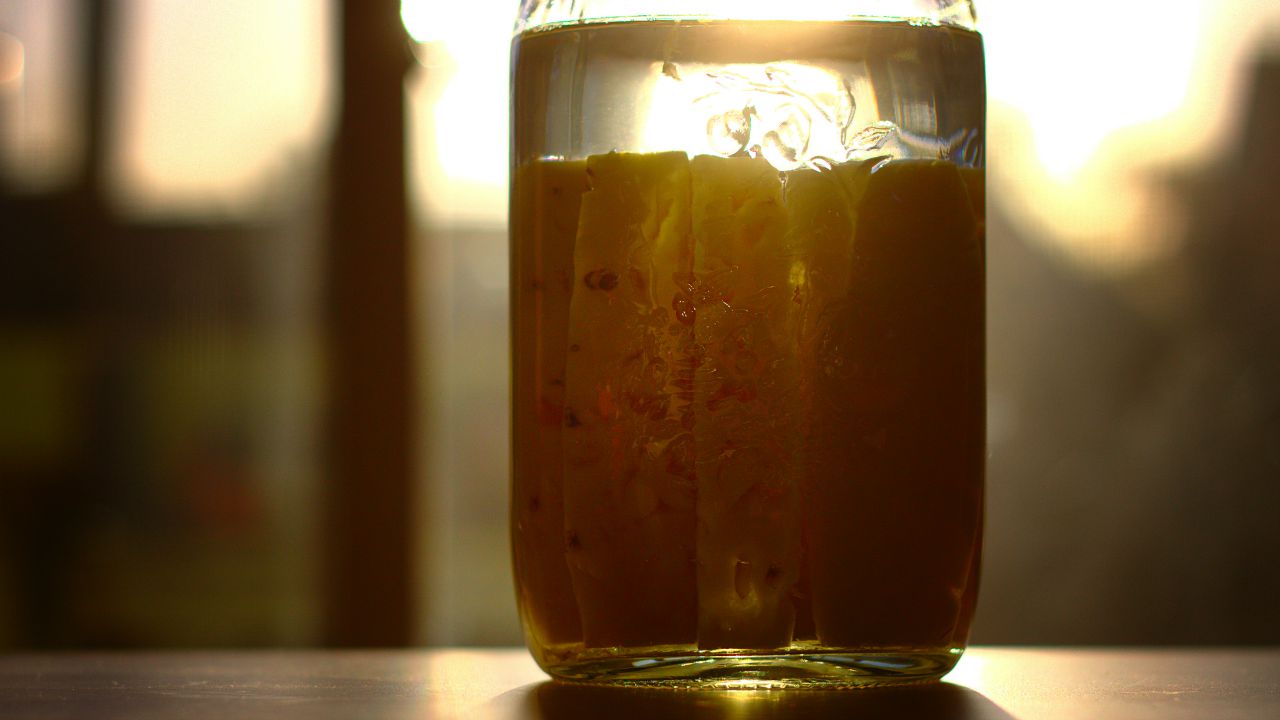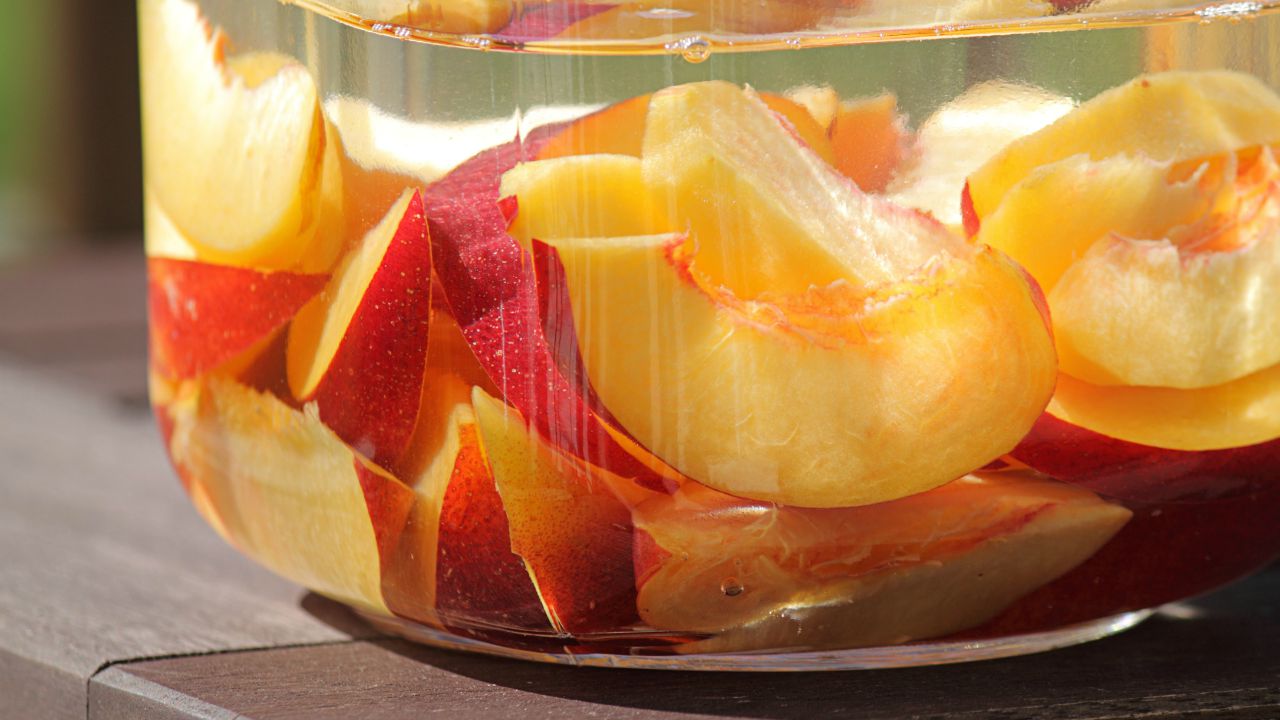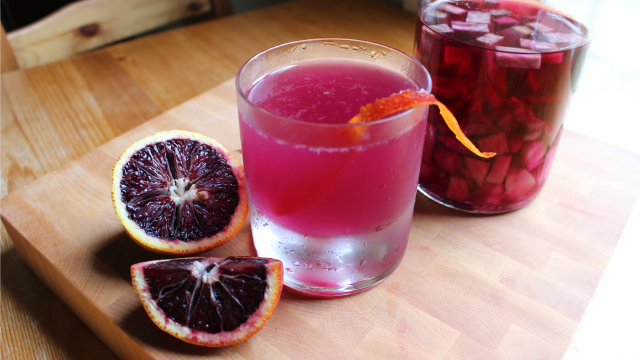Walk into any liquor store and you’re likely to see shelves and shelves of colourfully packaged vodkas with flavours ranging from “cookie dough” to “Swedish fish”. They may be marvels of flavour chemistry, but these spirits often taste artificial and aren’t good for much more than a novelty shot. Homemade infusions, however, are a completely different story. They have the added benefit of letting you control the outcome.
Pictures: Claire Lower, Mike McCune
Don’t confuse “control” with “stress” though! Pour yourself a drink if it helps, but take a deep breath. It’s very unlikely you’re going to screw things up. The great thing about infusions is that there aren’t any super strict rules, only loose guidelines you’re free to observe or ignore as you see fit. I personally wouldn’t recommend infusing bourbon with pineapple, but don’t be afraid to follow your unique (and perhaps strange) palate to see where it takes you.
Step 1: Pick Your Poison
Since it doesn’t have a lot of flavour on its own, vodka is an obvious choice for infusions, but don’t rule out other, more flavourful spirits like whiskey, tequila or brandy. Just be aware that the more flavourful the alcohol is, the more flavourful the infusion ingredient needs to be. Cucumbers lend a great subtle freshness to vodka, but would be barely detectable (and just plain weird) in a bourbon.
In terms of price, mid-range spirits should be more than acceptable, but don’t go super cheap here as strawberries or vanilla are unlikely to cover up the taste of terrible, cheap vodka. When in doubt, follow this rule: If you wouldn’t drink it in a cocktail, don’t use it for an infusion. If you’re concerned about “wasting” precious ethanol, just remember that you don’t have to infuse an entire bottle, a cup will work just fine.
Step 2: Know Your Flavours

At its simplest, making an infusion requires nothing more than chopping up a food and tossing it into a sealable container with some booze. You can skip the peels, though — if you wouldn’t eat them (I’m thinking bananas and melons), go ahead and remove them. Vegetables require no more than a quick dice, and you can leave herbs whole. All that said, there are a couple of ingredients that need a little more thought and prep:
- Citrus: The ol’ chop and toss method would work here if not for that pesky pith, aka the white part of any citrus fruit inside the peel that will give your infusion a bitter unpleasant flavour. For this reason, I prefer to use zest only for my citrus infusions, and use a vegetable peeler to remove only the outermost peel.
- Fat: We, as a culture, seem to be obsessed with putting bacon in everything, and alcohol is no exception. But it’s not as simple as throwing a couple of strips of fried pork into some bourbon, in fact you won’t be infusing anything with pieces of meat, but will instead employ a method known as “fat washing”. The video below walks you through the process with good ol’ bacon grease, but this method can be applied to any fat. Olive oil-infused gin makes a great martini, and the flavours of sesame oil, coconut oil, and even duck fat can all be infused into alcohol without any greasy mouthfeel.
Finally, don’t limit yourself to sweet. Spirits infused with savoury herbs like coriander or spicy peppers make a great base for a Bloody Mary or margarita and tears of one’s enemies provide a nice salty counterpoint to a sweeter brandy.
(“What about candy?” you say? Well, that’s not really an “infusion” but more of a “dissolving,” so I’m not going to cover it here. If you simply must have Swedish Fish-flavuored vodka, check out this post by 1 Fine Cookie.)
Step 3: Measure It Out (or Don’t)
I’ve made quite a few infusions, and have only ever eye-balled it, usually erring on the side of “way more fruit than is required”. If the thought of that makes you uncomfortable, feel free to take a gander at the handy chart provided by Marcia Simmons from Serious Eats (I’m assuming the “parts” are by volume):
- Melons, cucumbers, sweet peppers, berries, stone fruits, apples, pears: one part ingredient to one part spirit
- Fresh herbs, hot peppers, citrus, ginger: one part ingredient to two parts spirit
- Most dried spices: one part ingredient to three parts spirit
- Vanilla: one pod per cup of spirit
- Cinnamon: five 5cm sticks per cup of spirit
The only other ingredient I like to add is a bit of sugar (no more than a teaspoon per cup) to help soften any alcoholic bite and round out the flavours. I’ve even done this with savoury flavours (such as horseradish) and it really helps smooth everything out.
Step 4: It’s Go Time

Once you’ve picked your spirit and prepped your other ingredients, it’s time to combine. Throw everything in sealable glass jar, store it out of direct sunlight at a reasonable room temperature, and wait, gently shaking once a day. How long you wait once again depends on your ingredients but given the fact that ethanol is a pretty effective solvent, you rarely need more than a week, especially if you’re only infusing a cup or two.
Super flavourful ingredients impart their flavour more quickly, and you can always taste after a day or two to see how things are going. If you’re more of a planner, Marcia Simmons once more has some handy guidelines for you:
- Herbs, hot peppers, vanilla beans, ginger, cinnamon, citrus: one to three days
- Melons, sweet peppers, berries, stone fruits: three to six days
- Cucumbers, most vegetables, apples, pears: five to seven days
- Most dried spices: eight to 14 days
Once your creation is sufficiently flavoured, strain, strain and strain some more. Leftover bits of plant matter can degrade and add off-flavours, so removing them is key to keeping your adult beverage tasting its best. A cheesecloth-lined sieve is sufficient if you’ll be consuming your infusion quickly, but running it through a coffee filter is the best way to ensure you get every little bit of fruit, vegetable, or herb out of there.
Your unique and delicious alcoholic project is now ready to be consumed. Since it’s already packed with flavour, I recommend serving it chilled and up, with maybe a splash of soda if you absolutely have to.

Comments